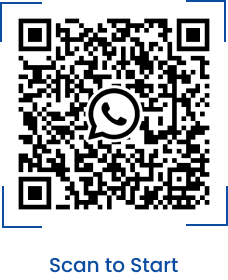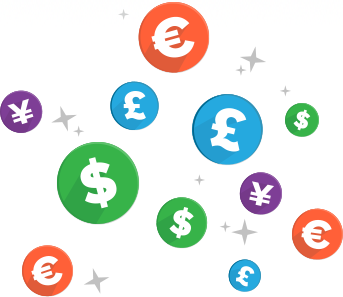The Chinese Yuan is the official currency of People's Republic of China. 'Renminbi' is the official term used to refer the China's currency and it literally translates to 'the People's Currency'.
The Yuan currency code is CNY and is represented using the symbol ¥. The word Yuan mean 'round'. 10 Fen make 1 Jiao and 10 Jiao make 1 Yuan.
Everything You Need To Know About The China Currency:
- China currency is the 5th most traded currency in the world and recently has been added to the basket of currencies used by the IMF.
- The most often used coins are ¥1, 1 JIAO, 5 JIAO, 1 FEN, 2 FEN, and 5 FEN.
- The most frequently used banknotes are ¥1, ¥2, ¥5, ¥10, ¥20, ¥50, ¥100, 1 JIAO, 2 JIAO, and 5 JIAO
Chinese Yuan - History of Chinese Yuan
China is one of the fastest growing economies of the world and can be seen in different areas of the world economy. Its official currency, Renminbi (RMB), is also known as the Chinese Yuan (CNY) and has a symbol ¥. China has been using the official currency RMB since 1949. It was first issued by the People's Bank of China. As of now, Renminbi holds a position in the list of reserve currencies of the International Monetary Fund (IMF). In 2015, the IMF made this announcement and along with Yen, Euro, US Dollar, and Pound Sterling, Renminbi is also a reverse currency. The Chinese Yuan is pegged to the US dollar at a daily reference rate and has an exchange rate of 6.8 Chinese = 1 US Dollar or 1 Chinese Yuan = 0.145 US Dollar
Check the table below for quick insight into the history of Chinese the Yuan:
| Particulars |
Details |
| Beginning of Chinese the Yuan |
1948 |
| First issued by |
People's Bank of China |
| Pegging |
Pegged to US Dollar at the daily reference rate of People's Bank of China |
< tr>
Exchange rate |
$1 = ¥6.8 |
| The Central Bank of China |
People's Bank of China (PBOC) |
| Denominations |
Banknotes: 1, 2, 5, 10, 20, 50, and 100 Yuan Coins: 1, 2, and 5 Fen |
The literal meaning of the word 'Renminbi' is 'people's money'. The term was introduced by the Communist Party of China in 1949. The central bank of China, People's Bank of China (PBOC) is headquartered in Beijing and is exclusively responsible for managing and administering the currency of the country including both banknotes and coins. The obverse side of the banknotes and coins has images and illustrations of importance. Some have the charismatic images of Mao Zedong, the Communist Party leader and the historic personality of China. Others include the beautiful historical buildings, landscapes, and traditional attire of the country.
China manages currency banknotes and coins of diverse denominations. 1 Yuan equals 10 jiaos and 1 Jiao equals 10 fens. The banknote denominations include 1, 2, 5, 10, 20, 50, and 100 Yuan and also have 1, 2, and 5 jiao. The pegging of the Yuan to the US Dollar was loosened in 2005 and Yuan was allowed to appreciate. In short, the Yuan is fixed at a base rate against the US Dollar and is yet allowed to appreciate as well. The devaluing of the Yuan has helped Chinese goods become more affordable globally and thus, also helped it become one of the reserve currencies of the IMF.
Factors Affecting the Exchange Rate of the Chinese Yuan
Since Yuan is loosely pegged to the US Dollar, there are various factors that impact the exchange rate of the Yuan. It is fixed on a daily basis at the reference rate suggested by the PBOC. Let's see what impacts the exchange rate of the Yuan:
1. Exports from China:
Chinese products are popular across the globe and exports from China yield a good amount of profit for the country. It helps in maintaining a good exchange reserve for China thus resulting in a good exchange rate for Yuan against the US Dollar. Also, the USA is one of the largest export markets of China which has also strengthened China-US relations resulting in China's entry into the World Trade Organisation in 2001.
2. Pegging of Yuan:
China, unlike many countries, does not have a floating exchange rate. It sets its exchange rate on a daily basis as per the daily reference rate recommendations by PBOC. China has pegged the Yuan to the US Dollar. By 2005, the pegging has been loosened and Yuan has been allowed to appreciate against the Dollar. It has helped Chinese goods become more affordable in the international market thus appreciating the exports from China to the rest of the trade partner countries globally.
3. Others:
Other than the exports and pegging of the Yuan, certain other factors also impact the rate of the Yuan in the international market. The inflation rate, fuel price, interest rates globally and of PBOC, foreign reserves of the country, and commodity prices in the international market also affect the rate of the Yuan. China has a good amount of foreign reserves and has also been enlisted as a reserve currency by the IMF. All these are the reasons why Yuan stands in a better position in the global markets today.
Both Yuan and Renminbi are the names of Chinese currencies and you may use them interchangeably. However, Yuan is generally used to refer to the price value of a product (A mobile phone costs ¥ 2,000) and Renminbi is used to refer to the currency in general.




















